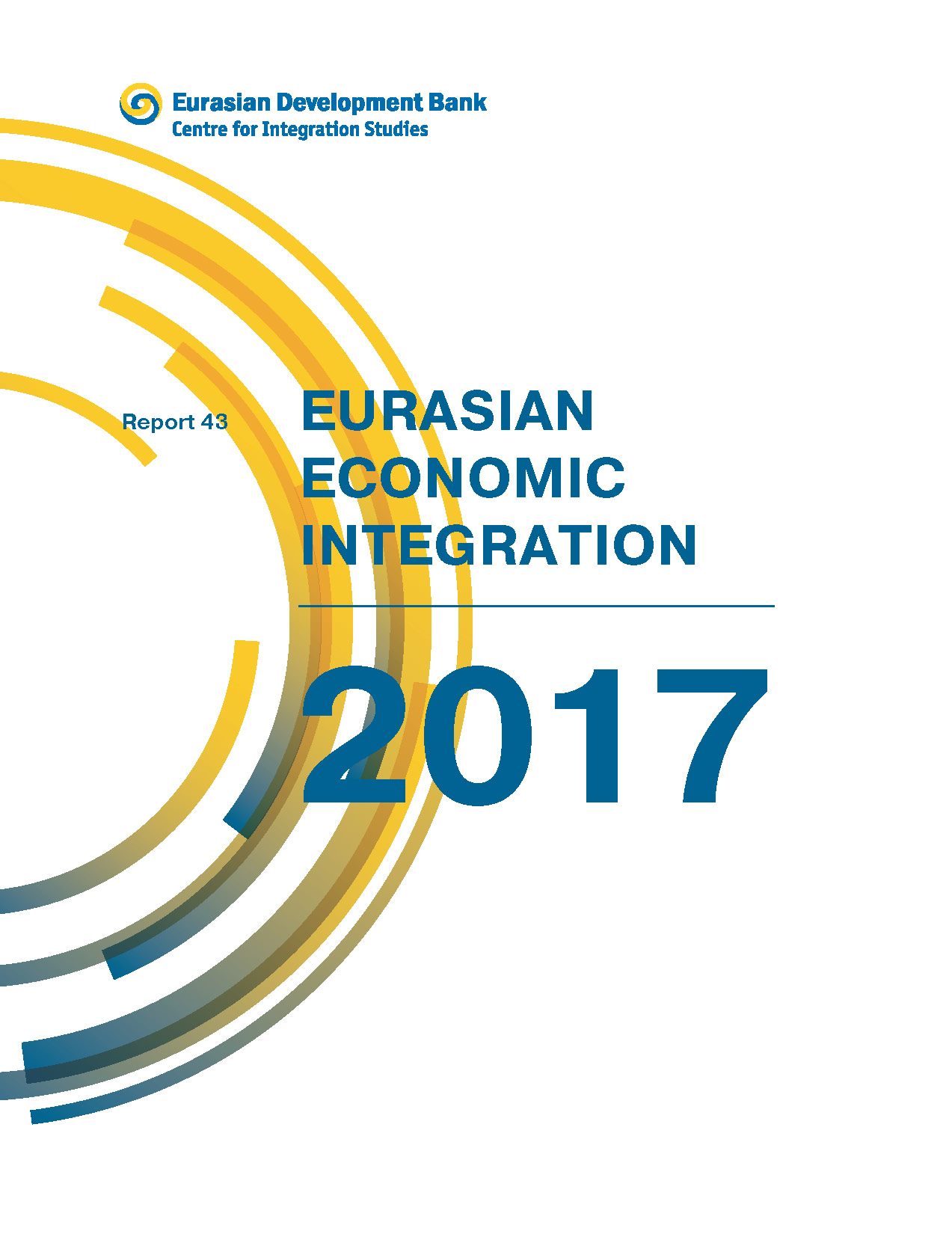Eurasian Economic Integration – 2017
| Topic: | Global governance |
| Region: | Post-Soviet space |
| Year: | 2017 |
| Publisher: | EDB Centre for Integration Studies |
| Authors / Editors: | Evgeny Vinokurov, T.V. Tsukarev, Vladimir Pereboyev, Д. Коршунов, М. Демиденко, Р. Губенко, Е. Хмаренко |
| ISBN: | 978-5-906157-35-5 |
Description
The report reflects the directions, events, and decisions that determine the current vectors of the integration processes in the Eurasian Economic Union. The authors offer fresh data and analytical insights with respect to macroeconomic development; changes in trade and investment capital flows; the labor market; and progress in non-tariff barriers elimination. They provide a detailed review of certain critical developments, including the endorsement of the EAEU Customs Code; the completion of negotiations on the common drugs and medical products market; and the acceleration of efforts to create free trade areas.
The report has the following structure. Chapter 1 Eurasian Economic Integration presents a structured view of internal EAEU developments related to a variety of key areas and processes. They range from the Customs Code and common drugs and medical products market to non-tariff barriers, financial markets, and current free trade area negotiations. Chapter 2 Macroeconomic Processes in the EAEU provides an analysis of the most important indicators of the social and economic development of EAEU member states. It describes the convergence of their economies. Chapter 3 Common Goods and Services Market, the largest chapter in the report, focuses on the evolution of mutual trade and the creation of common goods and services markets. In Chapter 4 Investments in the EAEU, we proceed to review mutual investments within the EAEU and external investment flows to and from Eurasian countries. Chapter 5 Common Labor Market presents information on one of the frequently underestimated success stories of Eurasian integration—the common labor market. It also includes certain incidental matters such as mobility of pensions, cash remittances, and medical insurance coverage for labor migrants. Chapter 6 Public Perception of Eurasian Integration deals with how the various aspects of Eurasian integration are viewed by the general population.
The EDB Centre for Integration Studies intends to continue the publication of the report on an annual basis.
Table of Contents
Address by Dmitry Pankin, EDB Chairman of the Management Board
Introduction
I Eurasian Economic Integration
The Most Important Events and Decisions of 2016
EAEU Treaty Implementation Progress in 2016
EAEU International Cooperation: New Agreements and Treaties with Third Parties and Regional Associations
II Macroeconomic Processes in the EAEU
Main EAEU Economic Trends
Analytical Outlook. Observance by EAEU Member States of Sustainable Economic Development Indicators Stipulated by the EAEU Treaty.
III Common Goods and Services Market
Common Trends in Mutual and Foreign Trade
Trade Reduction Causes: External and Internal Factors
EAEU Foreign Trade
EAEU Mutual Trade
Impact of Growth in Foreign Trade of EAEU Member States on Their Rankings in International Ratings
Foreign Trade in Services
IV Investments in the EAEU
Mutual FDI in the EAEU
Investment Cooperation of the EAEU with Greater Eurasia
Analytical Outlook. Why Has Competition between Jurisdictions Failed to Take Off?
V Common Labor Market
VI Public Perception of Eurasian Integration
Electronic versions
Poll conducted
-
In your opinion, what are the US long-term goals for Russia?
U.S. wants to establish partnership relations with Russia on condition that it meets the U.S. requirements 33 (31%) U.S. wants to deter Russia’s military and political activity 30 (28%) U.S. wants to dissolve Russia 24 (22%) U.S. wants to establish alliance relations with Russia under the US conditions to rival China 21 (19%)




